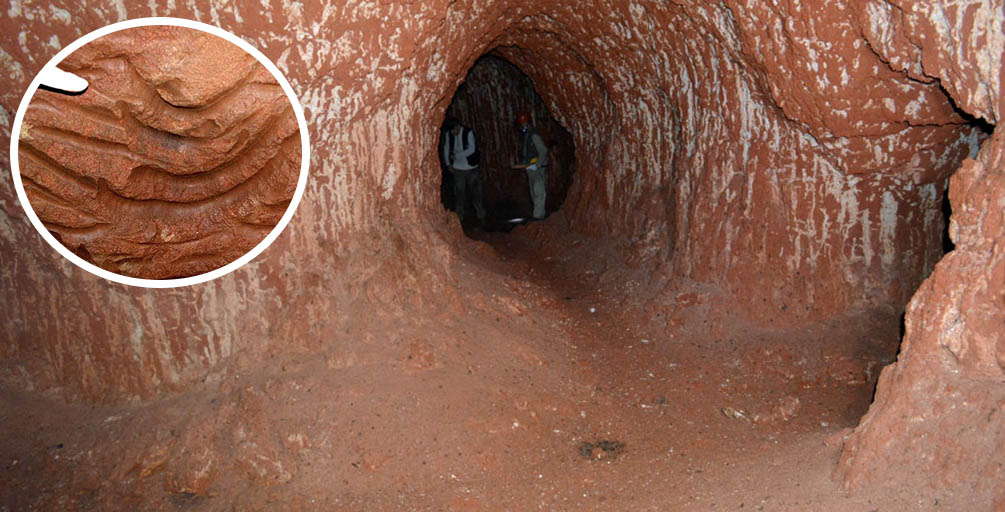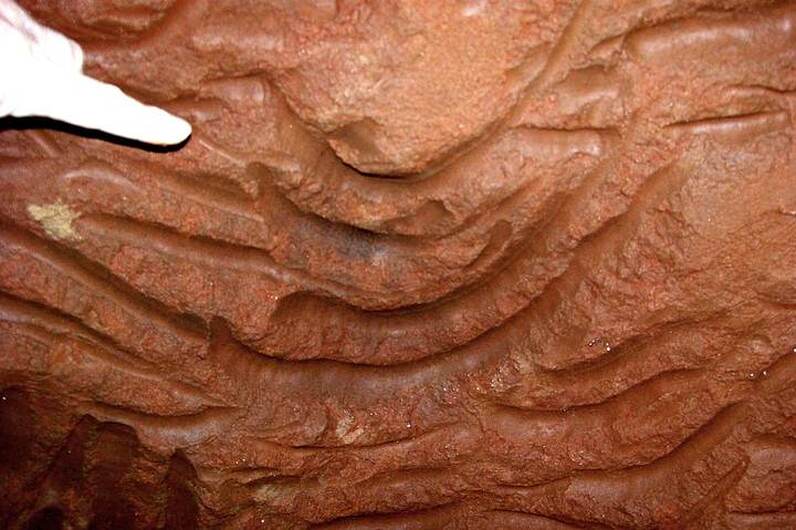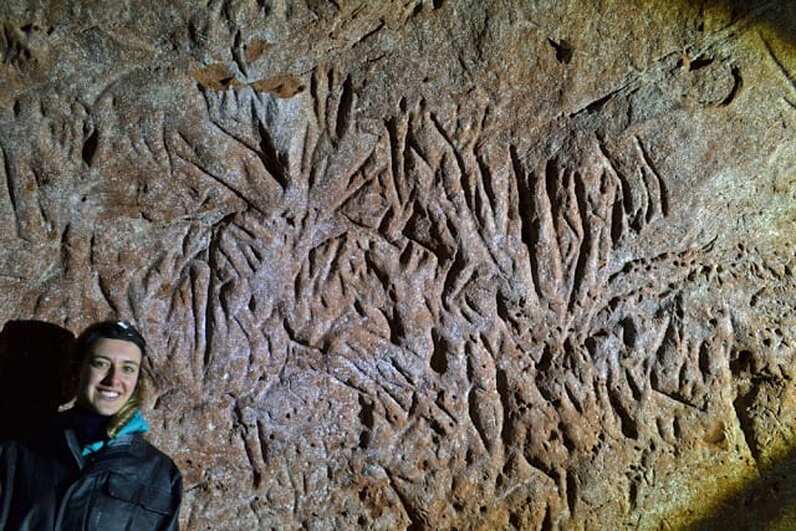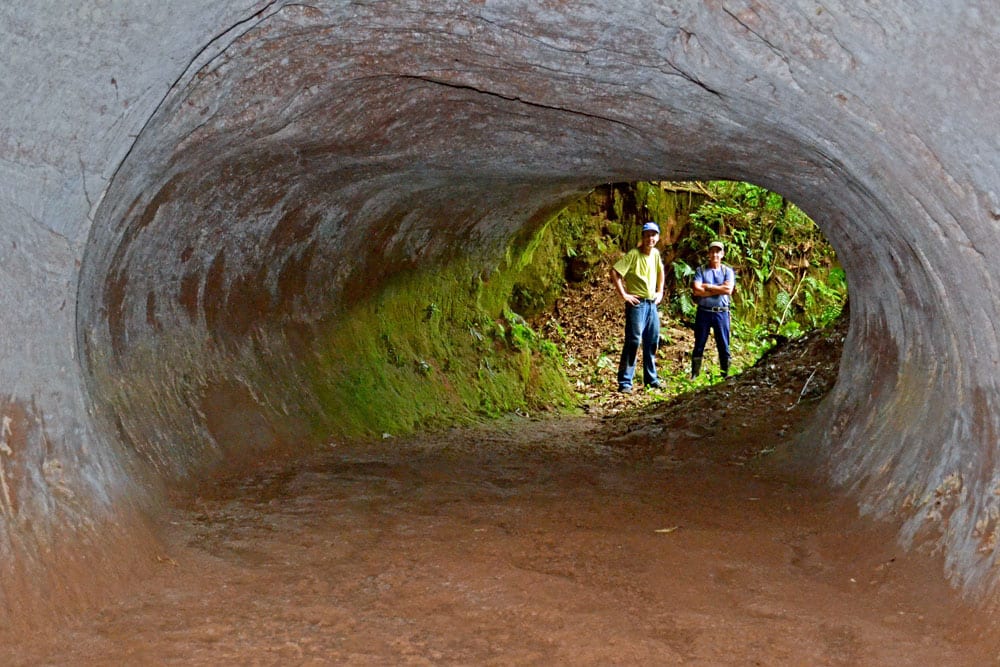|
Hundreds of tunnels — which date back at least 10,000 years — have been discovered in Brazil. Some of the tunnels feature mysterious claw marks’ on the walls. “There’s no geological process in the world that produces long tunnels with a circular or elliptical cross-section, which branch and rise and fall, with claw marks on the walls,” says a geologist. “I’ve [also] seen dozens of caves that have inorganic origins, and in these cases, it’s very clear that digging animals had no role in their creation.” Experts in Brazil have discovered hundreds of underground tunnels which date back over 10,000 years. Interestingly, experts believe that these mysterious tunnels were NOT carved by humans, but by an extinct ancient species. The discovery was made by Heinrich Theodor Frank, a geologist at the Federal University of Rio Grande do Sul — one of the largest federal universities in Brazil. As Heinrich was driving on the national Novo Hamburgo highway, he noticed a strange hole of around one meter in diameter at a construction site which caught his attention. Since he was in a hurry to get home, he did not stop. However, a few weeks later he went back to the same place with his family, where he stopped and asked them to wait a moment in the car while he investigated the tunnels. “I noticed that it was a tunnel, about 70 centimeters high and a few meters in length. The interior was full of scratches,” explains Theodor Frank to National Geographic. “When I got home I looked for an explanation on the internet, but I did not find anything.” “Since then I have heard that the tunnels are huge anthills or that they were created by Indians, Jesuits, slaves, revolutionaries and even bears. Some even talk about a great mythological serpent, which dug the tunnels,” he says. Trying to get to the bottom of the mystery, Theodor Frank eventually sent some photographs to Marcelo Rasteiro, a member of the Brazilian Society of Speleology, who responded by sending an article about paleoburrows, tunnels excavated by any type of living organism in any geological age. “For example a worm in the Cambrian, a mollusk in the Mesozoic or a rat in the Pleistocene.” “I didn’t know there was such a thing as paleoburrows,” says Frank. “I’m a geologist, a professor, and I’d never even heard of them.” So who could have dug those terrifying labyrinthine tunnels, with their walls covered with scratches? “When you explore the burrows you sometimes have the feeling that there is a creature waiting for you after the next curve as if it were the lair of a prehistoric animal,” says Frank in an article published by Discovery. Certainly, these tunnels were not created by the natives of Brazil. “The Indians who lived in Brazil before the arrival of the Europeans did not know about the existence of iron and therefore had no tools to dig through the hard rocks in which these tunnels are dug,” explains National Geographic. Curiously, there are hundreds of these tunnels all over Brazil, although many Curiouslyletely filled with sediment that accumulated after the tunnels were abandoned, but the entries are still distinguished in a circular or elliptical form. Geologist Amilcar Adamy of the Brazilian Geological Survey has confirmed the discovery of a large complex of 600-meter-long tunnels in the state of Rondonia. Furthermore, Frank notes that “in neighboring countries such as Uruguay, Paraguay, Chile and Bolivia we have detected a few caves that could also be paleoburrows. In Argentina, there are many of them, mainly in the cliffs of the Atlantic coast, in Mar del Plata.” As noted by Alfredo Carpineti from IFLScience, over 2,000 burrows have been found, including one just last Wednesday. Scientists believe they were dug between 10,000 and 8,000 years ago, although researchers are yet to properly date them. Frank says that speleothems, or mineral deposits, growing on burrow walls could be used to calculate an age, although that hasn’t been tried yet either. Giant Armadillos? Mega-Sloths? “The biggest giant armadillo had a body width of 80 centimeters, while the tunnels reach widths of 1.4 meters and in addition, the ceiling is full of scratches “I personally believe they were excavated by land sloths, a group of mammals that became extinct in that area about 10,000 years ago,” says Frank. “There are large tunnels up to two meters high and four meters wide that were undoubtedly excavated by sloths. We do not know the specific species, but surely the largest ones (megatheriums and eremoterios) were too large to dig,” he added. “We also do not know what the function of the paleoburrows is, perhaps the climate is an explanation: it was drier and hotter than today and the tunnels were isothermal, but this can hardly explain the complex system of tunnels several hundred meters long, which were most likely inhabited by groups of sloths or armadillos. “The roofs and walls of many tunnels are polished, probably thanks to the friction of the animals’ fur, which moved through the tunnels for decades or even centuries,” concluded Frank. “So if a 90-pound animal living today digs a 16-inch by 20-foot borrow, what would dig one five feet wide and 250 feet long?” asks Frank. “There’s no explanation – not predators, not climate, not humidity. I really don’t know.” However, as noted by Discovery, another mystery is the strange geographic distribution of the tunnels. The so-called paleoburrows are common in southern parts of Brazil, in the states of Rio Grande do Sul and Santa Catarina, they are, so far, almost unknown just to the south in Uruguay. Furthermore, experts note that very few of them have been discovered in northern parts of Brazil, and only a handful of possible burrows have been found in other South American countries.
10 Comments
NA
6/23/2021 08:03:33 am
You mention that natives (idk why you still call them Indians we've known they aren't since the spanish got there?) before the spanish couldn't have dug this because no iron? So did sloths build the pyramids and the olmec heads? Inherent racism towards tribal cultures is ugly, and shows a closed mind. Thank you for showing this amazing discovery, but you'll never get to the bottom of it (pun intended) if you keep a closed mind. Giant sloths did not dig this cave, otherwise I'd expect to find them in every single place they inhabited.
Reply
Guess
6/23/2021 10:56:39 am
This wins dumbest comment of the new millennium lol
Reply
Person
6/23/2021 02:50:43 pm
And this is why these problems persist. SMH.
Person
6/23/2021 02:52:04 pm
NA is right, you know.
John
6/24/2021 04:04:37 am
Ant people melted the stone with magnetic induction tunnel boring machines.
Reply
NA Support
6/23/2021 03:31:35 pm
I am here to support NA. His comment is great.
Reply
Nack Jicholson
6/23/2021 05:36:09 pm
Ditto, 'guess' alias is just gaslighting.
Reply
Nack Jicholson
6/23/2021 05:34:48 pm
Sloths? You're being sarcastic I hope.
Reply
?
6/23/2021 06:06:16 pm
I cannot follow the logic that "indians" could not be responsible, because they didn't have iron...yet animals are perfectly capable, without the use of iron.
Reply
rick sander
6/24/2021 09:03:06 pm
claw marks’
Reply
Leave a Reply. |
Helena MatiasEditor Archives
July 2024
Please take a look below at the amazing work of Author and researcher Stephen Quayle
Categories
All
|






